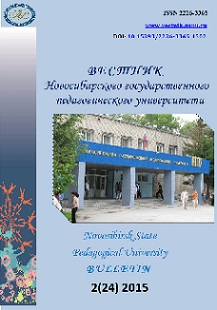РАЗЛИЧЕНИЕ СЕМИОТИЧЕСКИХ, ПРАГМАТИЧЕСКИХ И КУЛЬТУРНЫХ КОМПОНЕНТОВ ЛЕКСИЧЕСКОГО ЗНАЧЕНИЯ В ДВУЯЗЫЧНОЙ ЛЕКСИКОГРАФИИ РУССКОГО И ИТАЛЬЯНСКОГО ЯЗЫКОВ
THE DISTINCTION BETWEEN SEMIOTIC, PRAGMATIC, AND CULTURAL COMPONENTS OF LEXICAL MEANING IN BILINGUAL LEXICO-GRAPHY RUSSIAN AND ITALIAN LANGUAGES
Author(s): Anna BonolaSubject(s): Language and Literature Studies
Published by: Новосибирский государственный педагогический университет
Keywords: lexical contrastive analysis; Russian lexis; Italian lexis; semiotic differences; pragmatics; culture; Russian-Italian lexicography
Summary/Abstract: The article provides a contrastive analysis of the way Russian-Italian and Italian-Russian dictionaries represent semiotic, pragmatic, and cultural differences between equivalent lexemes. We'll consider the following dictionaries: (1) V. N. Majzel, N. А. Skvortsova. Italian-Russian Dictionary (1972); (2) G. F. Zorko, V. N. Majzel, N. А. Skvortsova. New Italian-Russian Dictionary (1995); (3) V. Kovalev. Kovalev's Russian-Italian— Italian-Russian Dictionary (1995); (4) Ju. Dobrovolskaja. Great Russian-Italian— Italian-Russian Dictionary (2001). Dictionaries (1) and (2) are the most imprecise as far as semantic differentiation is concerned. Their illustrative material, often poorly thought out, does not add any further information to the definition, even implicitly. Dictionarу (3) is the most accurate when describing the differences we analyzed and its vocabulary is richer (often special terms or uncommon meanings of words are given). Dictionarу (4) provides us with the essential semantic features of a given word, illustrating them through well-chosen examples and showing, in this way, a high-level contrastive analysis and a perfect knowledge of the Italian language.
Journal: Вестник Новосибирского государственного педагогического университета
- Issue Year: 2015
- Issue No: 2
- Page Range: 14-27
- Page Count: 14
- Language: Russian

